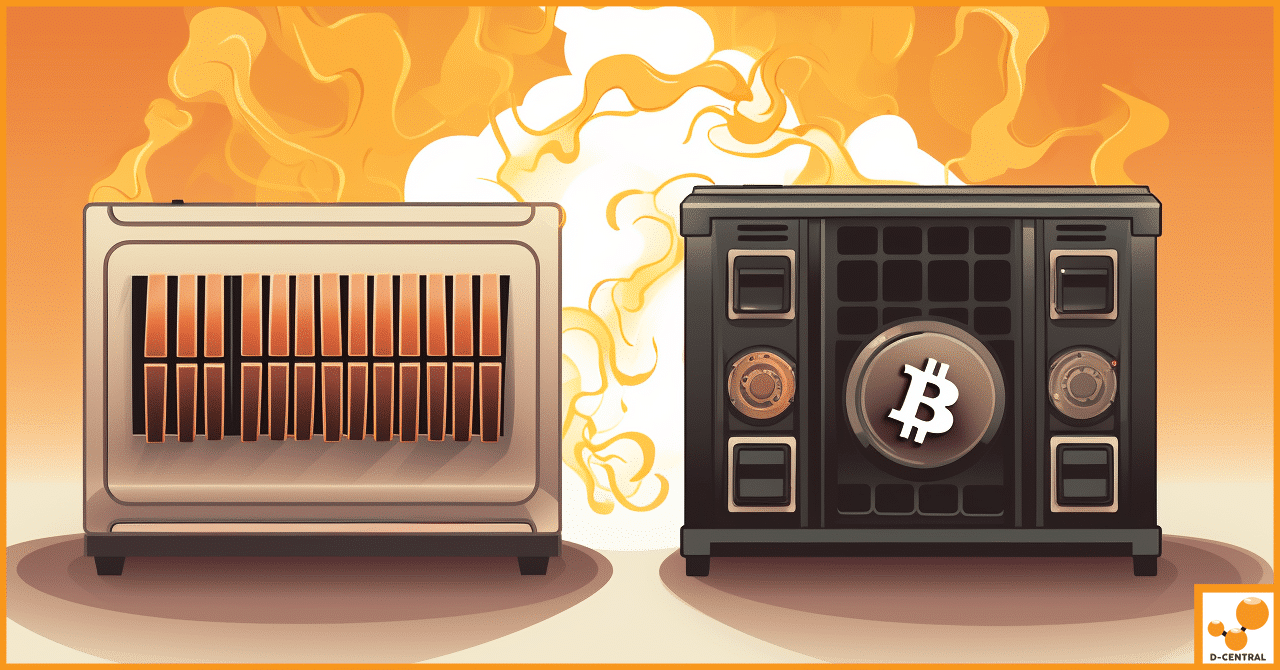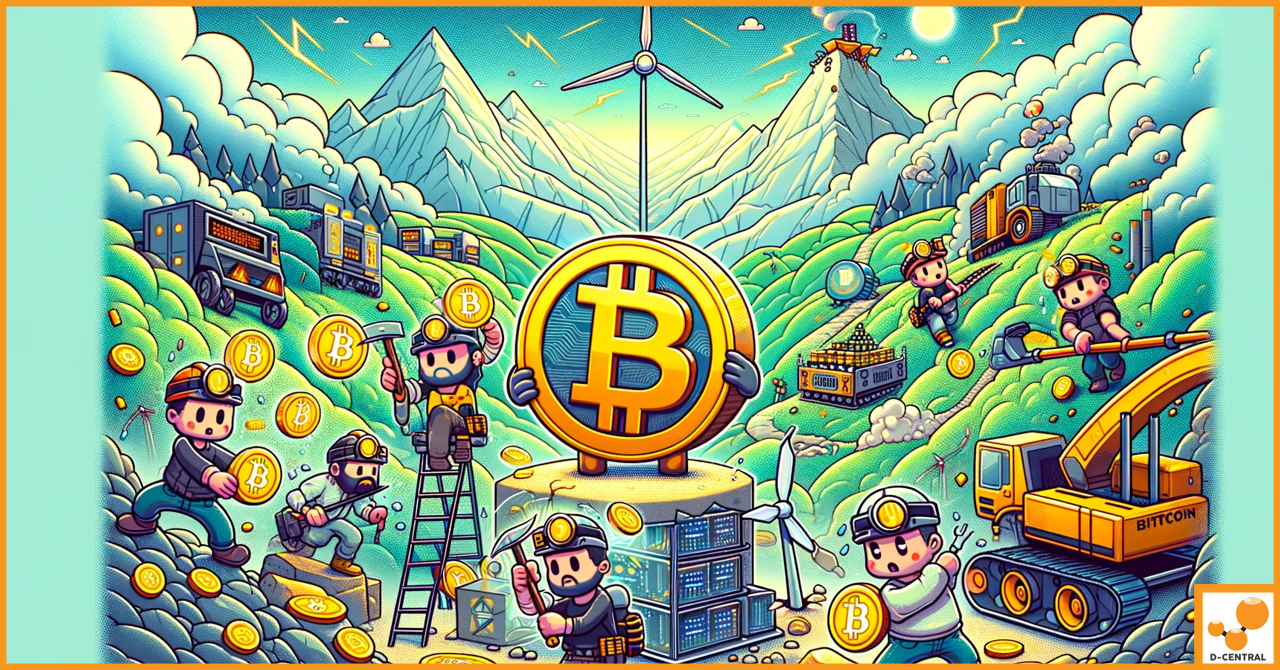In the ever-evolving world of technology and sustainability, Bitcoin heating has emerged as a potential game-changer in the realm of home comfort. But beyond the innovative concept and environmental benefits, there’s a pressing question on many homeowners’ minds: Is Bitcoin heating cost-effective compared to traditional heating methods? In this article, we’ll dive deep into a comprehensive cost analysis, comparing the expenses and benefits of traditional heating systems with the new-age Bitcoin heating solutions.
Traditional Heating: Types and their working principles
Traditional heating systems have been the backbone of home comfort for centuries. Over the years, various types of heating systems have been developed, each with its own set of principles and mechanisms:
- Forced Air Systems: These are the most common type of heating systems in modern homes. They work by heating air in a furnace and then using ducts to distribute the warm air throughout the house. The primary energy sources for these systems can be natural gas, oil, or electricity.
- Radiant Heating: This system uses panels in walls, ceilings, or floors to heat the rooms. The panels emit infrared radiation, which directly warms the objects and people in the room.
- Steam Radiant: These are older systems where steam is produced in a boiler and then piped to radiators throughout the home.
- Baseboard Heaters: These are individual units that heat and circulate air in the specific area where they are located. They can be electric or hydronic (heated by hot water).
- Geothermal Heating: This system harnesses the earth’s natural heat through pipes buried in the ground. It uses a heat pump to amplify and distribute this heat throughout the home.
Bitcoin Heating: How does it work?
Bitcoin heating is a novel concept that merges the world of cryptocurrency mining with home heating solutions. Here’s a breakdown of its workings:
- Mining Process: At its core, Bitcoin heating relies on the process of Bitcoin mining. Mining involves solving complex mathematical problems using powerful computer rigs. This process validates and records transactions on the Bitcoin blockchain.
- Heat Generation: The computational power required for mining produces a significant amount of heat. Instead of letting this heat go to waste, Bitcoin heating systems harness it to warm living spaces.
- Conversion Kits: To transform standard Bitcoin mining rigs into heating solutions, special conversion kits are used. These kits, like the ones offered by D-Central in collaboration with Cryptocloak, are designed to capture and distribute the heat efficiently.
- Dual-Purpose: The beauty of Bitcoin heating lies in its dual-purpose nature. While the system provides warmth to the home, it also mines Bitcoin, potentially offering an additional stream of income or offsetting the costs associated with heating.
In essence, Bitcoin heating is a sustainable and innovative approach to home comfort, turning the byproduct of a digital process into tangible, real-world benefits.
Initial Setup Costs
Traditional heating systems come in various types, and the initial setup costs can vary significantly based on the chosen system, its capacity, and the size of the area it’s intended to heat. Here’s a general overview:
- Forced Air Systems: The cost of installing a new forced air furnace can range from $2,000 to $5,000, depending on the furnace’s efficiency and size. This doesn’t include the cost of ductwork, which can add significantly to the initial investment if not already in place.
- Radiant Heating: Installing radiant floor heating can cost between $6 to $15 per square foot, depending on the type of system (electric or hydronic) and the complexity of the installation.
- Steam Radiant: The cost of steam radiators can range from $500 to $1,500 per unit, with additional costs for the boiler and piping.
- Baseboard Heaters: Individual electric baseboard units can cost between $50 to $200 each, while hydronic baseboard heaters can be more expensive, ranging from $300 to $500 per unit.
- Geothermal Heating: This is one of the pricier options, with installation costs ranging from $10,000 to $30,000, depending on the size of the system and the complexity of the installation.
Investment Required for Bitcoin Mining Rigs and Heating Conversion:
The cost of setting up a Bitcoin heating system is primarily influenced by the price of the mining rig and the conversion kit:
- Bitcoin Mining Rigs: The price of a Bitcoin mining rig can vary widely based on its processing power and efficiency. Entry-level miners can start at a few hundred dollars, while high-end models, like the Antminer S19, can cost upwards to $3,000.
- Heating Conversion Kits: Conversion kits, like the ones offered by D-Central in collaboration with Cryptocloak, come at an additional cost. These kits can range from $100 to $500, depending on the design, materials, and features.
- Additional Costs: It’s also essential to account for other costs like electricity infrastructure upgrades, ventilation systems, and any smart home integration features.
While traditional heating systems have a more straightforward cost structure, Bitcoin heating systems offer the potential for return on investment through Bitcoin earnings, which can offset the initial setup costs over time.
Operational Costs
The operational costs of traditional heating systems are primarily influenced by their energy consumption rates, which can vary based on the type of system, its efficiency, and usage patterns. Here’s a breakdown:
- Forced Air Systems: These systems, especially when powered by natural gas, are among the most cost-effective. On average, the cost can range from $0.50 to $1.50 per hour, depending on the gas prices and furnace efficiency.
- Radiant Heating: Electric radiant systems can be more expensive to operate, costing around $0.10 to $0.20 per square foot per day. Hydronic systems, which use heated water, might be more cost-effective in the long run.
- Steam Radiant: These systems can be costlier to operate, especially if they’re older and less efficient. The cost can range from $1 to $3 per hour, depending on the fuel source and system efficiency.
- Baseboard Heaters: Electric baseboard heaters can cost around $0.05 to $0.15 per square foot per day, while hydronic systems might be slightly more efficient.
- Geothermal Heating: While the initial setup cost is high, geothermal systems are incredibly efficient, leading to lower operational costs. On average, they can save homeowners 30% to 60% on heating and 20% to 50% on cooling costs compared to traditional systems.
Power Consumption of Bitcoin Miners and Associated Costs:
Bitcoin miners, especially powerful ones, can consume a significant amount of electricity. The operational costs are influenced by the miner’s efficiency and local electricity rates:
- Bitcoin Mining Rigs: For instance, the Antminer S17 Space Heater Edition has a power consumption of around 1000-1200 watts. If we consider an average electricity rate of $0.10 per kWh, operating this miner would cost around $2.40 to $2.88 per day.
- Heating Conversion Efficiency: It’s essential to note that while Bitcoin miners consume electricity, they convert a significant portion of it into heat. This dual-purpose nature can offset some of the operational costs, especially during colder months when heating is essential.
- Bitcoin Earnings: The operational costs can also be offset by the earnings from Bitcoin mining. The profitability depends on the current price of Bitcoin, transaction fees, and block rewards.
In summary, while Bitcoin miners might have higher operational costs due to their power consumption, the potential for Bitcoin earnings and the dual-purpose nature of the system (heating + mining) can make it a viable and cost-effective solution for many.
Maintenance and Longevity
Traditional heating systems, while reliable, do require periodic maintenance to ensure optimal performance and longevity. Here’s an overview:
- Forced Air Systems: Regular maintenance includes changing or cleaning filters, checking for duct leaks, and ensuring the furnace is in good condition. Annual maintenance can cost between $100 to $150. With proper care, these systems can last 15 to 20 years.
- Radiant Heating: Electric systems require minimal maintenance, while hydronic systems might need periodic checks for leaks and boiler maintenance. The lifespan can vary between 25 to 30 years for hydronic systems and 30 to 40 years for electric ones.
- Steam Radiant: These systems require regular checks for leaks, valve replacements, and boiler maintenance. Maintenance can cost around $100 to $200 annually. The lifespan of steam radiators can be 15 to 20 years, with boilers lasting up to 30 years with proper care.
- Baseboard Heaters: Electric units require minimal maintenance, mainly dusting and ensuring they’re free from obstructions. Hydronic units might need checks for leaks. Lifespan ranges from 15 to 20 years.
- Geothermal Heating: These systems require periodic checks of the heat pump and the ground loop. Maintenance costs can be around $100 to $150 annually. With proper maintenance, the heat pump can last up to 20 years, while the ground loop can last over 50 years.
Wear and Tear of Bitcoin Mining Rigs, Maintenance Needs, and Expected Lifespan:
Bitcoin mining rigs, given their continuous operation, are subject to wear and tear:
- Maintenance Needs: Regular maintenance for Bitcoin miners includes cleaning dust from the units, ensuring adequate ventilation, and replacing worn-out parts like fans. Periodic checks of the software and firmware updates are also essential. Maintenance can cost around $50 to $100 annually, depending on the miner’s condition and usage.
- Wear and Tear: Continuous mining can lead to hardware degradation over time. Components like fans, which ensure the miner remains cool, are especially prone to wear and might need replacements every couple of years.
- Expected Lifespan: The lifespan of a Bitcoin mining rig can vary based on its build quality, usage, and maintenance. On average, a high-quality miner like the Antminer S17 can last between 3 to 5 years. However, it’s essential to note that while the hardware might remain functional, its mining efficiency can decrease over time as newer, more powerful models emerge.
While both traditional heating systems and Bitcoin miners require maintenance, their longevity and associated costs can vary. Proper care and regular checks can ensure optimal performance and extend the lifespan of both systems.
Additional Benefits and Earnings
Bitcoin mining, while initially set up as a mechanism to validate and secure transactions on the blockchain, has become a lucrative venture for many. The potential earnings from Bitcoin mining are influenced by several factors:
- Block Rewards: Miners are rewarded with Bitcoins for every block they successfully mine. While this reward started at 50 Bitcoins per block in 2009, it gets halved approximately every four years. As of my last update in 2022, the block reward stands at 6.25 Bitcoins.
- Transaction Fees: Apart from block rewards, miners also earn from transaction fees. As the Bitcoin network gets busier, these fees can become a significant portion of a miner’s earnings.
- Bitcoin’s Market Price: The value of the earned Bitcoins is directly tied to its market price. A surge in Bitcoin’s price can significantly boost the earnings from mining.
- Mining Difficulty: As more miners join the network, the difficulty of mining increases, affecting potential earnings. It’s a dynamic that ensures the average time to mine a block remains at about 10 minutes.
Savings from Dual-Purpose Usage (Heating + Mining):
The concept of Bitcoin heating brings forth a unique proposition – the ability to serve a dual purpose:
- Heating Savings: Instead of the heat generated from mining going to waste, it’s harnessed to warm living spaces. This means during colder months, homeowners can save on traditional heating costs as the Bitcoin miner provides the required warmth.
- Efficiency: Bitcoin miners, especially when converted for heating purposes, operate at peak efficiency. The energy consumed is not just for mining but also for heating, ensuring that there’s minimal wastage.
- Offsetting Costs: The earnings from Bitcoin mining can help offset the operational costs. For instance, even if the miner consumes electricity worth $3 a day, but the earnings from mining are $5, there’s a net gain of $2. This doesn’t even account for the savings from the heating aspect.
In essence, Bitcoin heating offers a unique blend of benefits. It’s not just about earning from mining; it’s about optimizing energy usage, providing warmth, and ensuring that every watt of power consumed is put to the best possible use.
Environmental and Sustainability Costs
Traditional heating methods, depending on their energy source, can have varying impacts on the environment:
- Fossil Fuels: Systems that rely on oil, natural gas, or coal tend to have a higher carbon footprint. Burning these fuels releases carbon dioxide and other greenhouse gases, contributing to global warming.
- Electricity: Electric heaters, while not emitting greenhouse gases at the point of use, might still have a carbon footprint if the electricity they use is generated from non-renewable sources.
- Renewable Energy: Systems powered by solar, wind, or geothermal energy have a much lower carbon footprint. However, the initial setup, including the manufacturing of solar panels or wind turbines, might have environmental costs.
Environmental Impact of Bitcoin Mining and Potential for Sustainable Energy Sources:
Bitcoin mining, given its energy-intensive nature, has been under scrutiny for its environmental impact:
- Energy Consumption: High-performance mining rigs consume significant amounts of electricity. If this electricity comes from non-renewable sources, the carbon footprint of mining can be substantial.
- Geographical Variations: The environmental impact of Bitcoin mining varies based on where the mining takes place. For instance, mining in regions where electricity is primarily generated from coal will have a higher carbon footprint than mining in areas powered by hydroelectricity.
- Potential for Sustainable Mining: There’s a growing movement within the crypto community to shift towards more sustainable mining practices. This includes:
- Renewable Energy: Using solar, wind, or hydroelectric power to run mining operations.
- Heat Recovery: As seen with Bitcoin heating, the heat generated from mining can be harnessed for other purposes, ensuring energy isn’t wasted.
- Carbon Offsetting: Some mining operations are investing in carbon offset projects to neutralize their environmental impact.
In conclusion, while both traditional heating methods and Bitcoin mining have environmental implications, there’s significant potential to reduce their carbon footprints. Embracing sustainable energy sources and innovative solutions like Bitcoin heating can pave the way for a greener future.
Conclusion
As we delve into the intricacies of traditional heating versus Bitcoin heating, it becomes evident that both systems come with their unique sets of advantages and challenges. The decision to choose one over the other is not merely a matter of initial costs or operational efficiency but a broader consideration of long-term benefits, environmental impact, and future potential.
Weighing the Pros and Cons: Which is More Cost-Effective in the Long Run?
- Traditional Heating: While the initial setup costs for traditional heating systems might be lower, their operational costs, especially when relying on fossil fuels, can add up over time. Additionally, with the rising prices of non-renewable energy sources and the environmental toll they take, the long-term viability of some traditional heating methods might be in question.
- Bitcoin Heating: The dual-purpose nature of Bitcoin heating – providing warmth while earning cryptocurrency – offers a unique value proposition. While the initial investment might be higher, the potential earnings from Bitcoin mining, combined with savings on heating costs, can make it a cost-effective solution in the long run.
The world is rapidly evolving, with sustainability and innovation at the forefront of many industries, including home comfort. Bitcoin heating, with its blend of technology and practicality, represents a step towards a more sustainable and efficient future.
While it might not entirely replace traditional heating methods, its potential cannot be ignored. As more homeowners and businesses become aware of its benefits and as the technology behind it matures, Bitcoin heating could very well become a significant player in the home comfort industry.
In conclusion, the choice between traditional heating and Bitcoin heating is not a binary one. It’s about understanding individual needs, being aware of the environmental implications, and making informed decisions that align with future trends and sustainability goals.
FAQ
What are traditional heating systems?
Traditional heating systems include Forced Air Systems, Radiant Heating, Steam Radiant, Baseboard Heaters, and Geothermal Heating. Each system has its own set of principles, work mechanisms, and cost-strains.
How does Bitcoin heating work?
Bitcoin heating merges the world of cryptocurrency mining with home heating solutions. It relies on the process of Bitcoin mining, and the heat generated from the computational power required for mining is harnessed to warm living spaces. Special conversion kits are used to transform standard Bitcoin mining rigs into heating solutions.
What is the initial setup cost for traditional heating systems and Bitcoin heating?
The cost of setting up traditional heating can vary significantly, from a few hundred dollars to tens of thousands, based on the chosen system, its capacity, and the size of the area it’s intended to heat. On the other hand, Bitcoin heating system’s setup cost is primarily influenced by the price of the mining rig and the conversion kit, which typically ranges from a few hundred to a few thousand dollars.
Are the operational costs of traditional heating systems and Bitcoin miners different?
Yes, traditional heating systems have costs based on their energy consumption rates, which can vary based on the type of system, its efficiency, and usage patterns. Bitcoin miners have operational costs influenced by their power consumption and local electricity rates but also potential for Bitcoin earnings that can offset operational costs.
What are the maintenance and longevity differences between traditional heating systems and Bitcoin miners?
Both traditional heating systems and Bitcoin miners require maintenance, but their longevity and costs associated can vary. Proper care and regular checks can ensure optimal performance and extend the lifespan of both systems.
Do traditional heating systems and Bitcoin mining have environmental implications?
Yes, both traditional heating methods and Bitcoin mining have environmental implications. Their impact varies based on their energy source and practices around energy usage. Embracing sustainable energy sources and innovative solutions like Bitcoin heating can pave the way for a greener future.
Which is more cost-effective in the long run: traditional heating or Bitcoin heating?
While traditional heating systems might have lower initial setup costs, Bitcoin heating, with its potential earnings from mining and savings on heating costs, can prove more cost-effective in the long run. However, factors such as environmental impact, long-term benefits, and future potential should be considered when deciding between the two.




